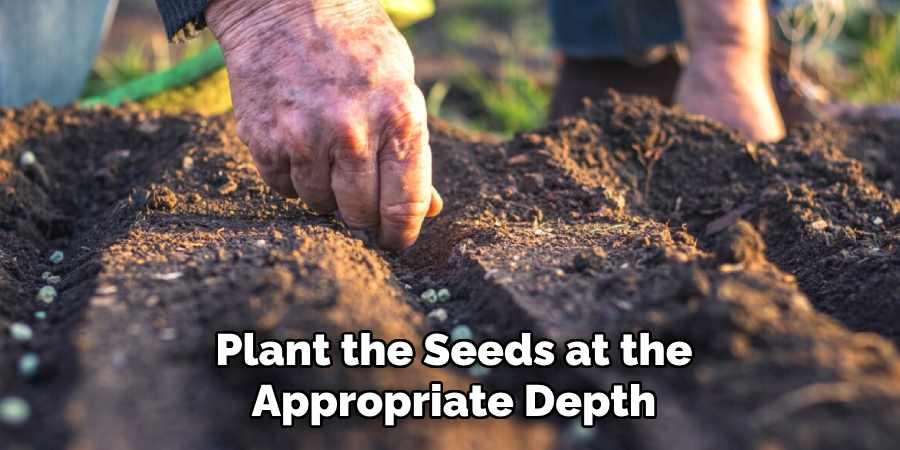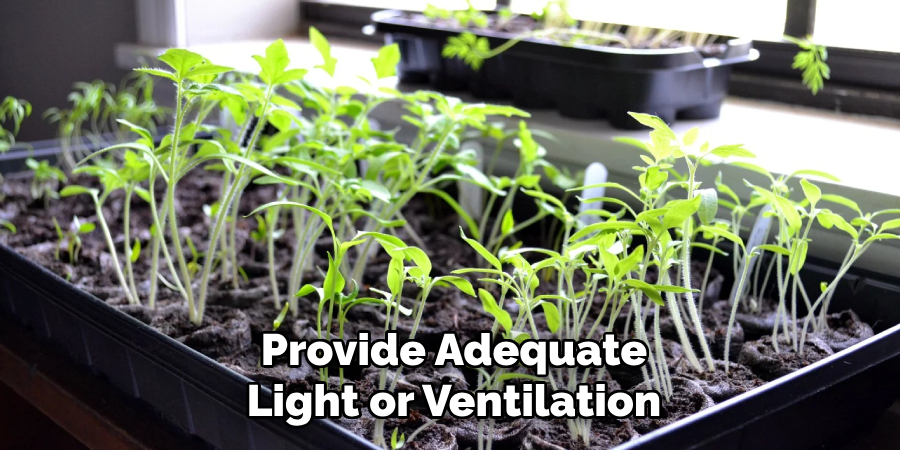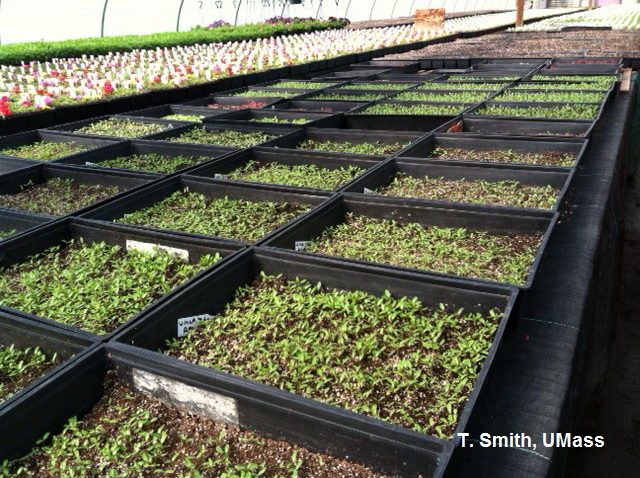To start seeds in a greenhouse, first, prepare good quality soil and choose the right seeds. Then, plant the seeds at the appropriate depth and water them regularly.
Starting seeds in a greenhouse is an effective way to get a head start on your garden and extend the growing season. By providing a controlled environment, a greenhouse offers plants optimal conditions for germination and growth. Whether you are a beginner or an experienced gardener, starting seeds in a greenhouse is a straightforward process that requires careful preparation and attention to detail.
We will guide you through the necessary steps to successfully start seeds in a greenhouse, from choosing the right seeds to providing essential care for your seedlings. By following these guidelines, you can enjoy healthy and robust plants to transplant into your garden when the time is right.

Credit: www.youtube.com
Benefits Of Starting Seeds In A Greenhouse
Starting seeds in a greenhouse offers several benefits, including a longer growing season. In a greenhouse, plants are protected from harsh weather conditions such as frost and extreme temperatures. Greenhouses also allow for better control over temperature and humidity, creating optimal conditions for seed germination and growth.
The controlled environment in a greenhouse promotes healthier and stronger seedlings, increasing the chances of successful transplanting into the garden. With a longer growing season, gardeners can start their seeds earlier and extend the time they have to enjoy their plants.
The protection offered by a greenhouse can also help prevent diseases and pests from affecting the seedlings. Overall, starting seeds in a greenhouse provides a more favorable environment for successful plant growth and an earlier start to the gardening season.
How to Start Seeds in a Greenhouse: 7 Easy Steps
Choosing The Right Greenhouse Setup
Choosing the right greenhouse setup involves considering the size and style of the greenhouse. For optimal sunlight exposure, select an appropriate location. Assess the available ventilation options to ensure a conducive environment. These factors are crucial in successfully starting seeds in a greenhouse.
Essential Equipment And Supplies
Starting seeds in a greenhouse requires certain essential equipment and supplies. Quality seeding trays or containers are necessary for proper seed germination. A seed starting mix, whether store-bought or a diy mixture, provides the ideal conditions for seeds to thrive.
Grow lights or natural sunlight are essential for providing the right amount of light for seedlings. Monitoring the temperature and humidity levels is crucial, which is why a thermometer and hygrometer should be utilized. Additionally, having the right watering supplies and a misting system ensures that the seeds receive adequate moisture.
With these equipment and supplies in place, you can successfully start seeds in your greenhouse, setting the stage for healthy and robust plants.
Selecting And Preparing Seeds
Starting seeds in a greenhouse requires careful selection and preparation. Choose seeds suitable for greenhouse cultivation. Test seed viability before planting. Treat seeds as necessary to improve germination rates. This will ensure a successful start to your greenhouse garden.
Preparing The Greenhouse
Preparing your greenhouse for seed starting begins with cleaning and sterilizing the space thoroughly. This ensures a healthy environment for seed germination. Once cleaned, create the ideal conditions for your seeds by setting up grow lights and optimizing their placement.
Adequate light is crucial for seedlings to grow properly. Place the lights at the right distance and angle to provide optimal coverage. By following these steps, you can establish a conducive environment for starting seeds in your greenhouse. Remember to maintain cleanliness throughout the process to prevent any contamination that could hinder seedling growth.
With a well-prepared greenhouse, you’ll be on your way to successful seed starting.
Starting The Seeds
Starting seeds in a greenhouse begins with filling trays or containers with the seed starting mix. Similarly, you must plant the seeds at the appropriate depth and spacing for optimal growth. Moreover, providing the right amount of water and moisture is essential for successful germination.

Additionally, managing temperature and humidity levels is crucial to create a favorable environment. By following these steps, you give your seeds the best chance to thrive and grow into healthy plants. So, whether you are a beginner or experienced gardener, starting seeds in a greenhouse can be a rewarding and fulfilling experience.
Happy gardening!
Care And Maintenance Of Seedlings
Starting seeds in a greenhouse requires careful attention to the care and maintenance of seedlings. Proper watering techniques, such as avoiding over or under-watering, are essential. Regular monitoring and adjusting of temperature and humidity ensure optimal seedling growth. To prevent common issues like damping-off and overcrowding, it is important to pay close attention to these factors.
Additionally, transferring seedlings to larger containers or pots when necessary promotes healthy root development. Following these guidelines will help ensure successful seed starting in a greenhouse environment.
Harden Off And Transplanting
Starting seeds in a greenhouse is a great way to get a jumpstart on the growing season. However, before transplanting them into the garden or larger containers, it is important to harden off the seedlings. Hardening off is the process of gradually acclimating the seedlings to outdoor conditions.
This is crucial because sudden exposure to the elements can cause shock and damage the plants. To successfully transplant the seedlings, follow these tips: choose a mild and overcast day, prepare the soil in advance, gently remove the seedlings from their containers, dig a hole and transplant them carefully, firm the soil around the seedlings, and water them thoroughly.
By hardening off the seedlings and following these transplanting techniques, you can ensure their successful transition from the greenhouse to the outdoor garden or larger containers.
Common Mistakes To Avoid
Starting seeds in a greenhouse can be tricky, but avoiding common mistakes is essential for success. One common error to avoid is overwatering or underwatering seedlings. Check the moisture levels regularly and adjust accordingly. Another mistake to steer clear of is neglecting to monitor temperature and humidity levels.
These factors play a significant role in seed germination and growth. Additionally, failing to provide adequate light or ventilation can hinder the seedlings’ development. Make sure the greenhouse has sufficient lighting and proper ventilation to promote healthy growth. Lastly, be cautious not to plant the seeds too deeply or too shallowly.

Follow the guidelines provided for each type of seed to ensure optimal growth. By avoiding these mistakes, you can start seeds successfully in a greenhouse and enjoy bountiful harvests.
Troubleshooting Seed Starting Issues
Starting seeds in a greenhouse can have its challenges. Troubleshooting common germination problems is essential. Identifying issues such as poor seed quality or improper moisture levels can help address them. Pests and diseases can also pose a problem, so taking preventive measures is crucial.
Regularly checking for signs of infestation and using organic pest control methods can help keep your seedlings healthy. Additionally, nutrient deficiencies or imbalances can hinder growth. Conducting soil tests and amending the soil with necessary nutrients can rectify this issue.
With careful observation and timely action, you can ensure successful seed starting in your greenhouse.
Conclusion: Greenhouse Seed Starting Success
Starting seeds in a greenhouse provides numerous benefits and increases the chances of success. The optimal growing conditions in a greenhouse ensure that seeds germinate and thrive. The controlled environment allows for better temperature, humidity, and lighting, resulting in healthier and stronger plants.
Additionally, the greenhouse protects the seedlings from pests and harsh weather conditions, enhancing their growth potential. Furthermore, starting seeds in a greenhouse allows for experimentation and learning from experience. Gardeners can try different techniques, varieties, and timing to see what works best for them.
This valuable knowledge can be applied in future plantings, improving overall gardening skills. So, whether you are a beginner or a seasoned gardener, starting seeds in a greenhouse is a worthwhile endeavor that can lead to successful and rewarding harvests.
Frequently Asked Questions For How To Start Seeds In A Greenhouse
How Do You Start Seeds In A Greenhouse?
To start seeds in a greenhouse, fill seed trays with potting mix, plant the seeds at the appropriate depth, water them gently, and place the trays in a warm and well-lit area. Ensure proper ventilation and monitor moisture levels regularly.
Transplant the seedlings once they are strong enough.
What Temperature Is Ideal For Greenhouse Seed Starting?
For greenhouse seed starting, the ideal temperature range is between 65°f and 75°f (18°c to 24°c). This temperature range provides optimal conditions for seed germination and growth. Use a thermometer in the greenhouse to monitor and maintain a consistent temperature throughout the day and night.
How Often Should Greenhouse Seedlings Be Watered?
Greenhouse seedlings should be watered when the top inch of soil feels dry to the touch. Avoid overwatering as this can lead to root rot and other issues. Water gently, ensuring that the excess water drains well. Consistency is key in maintaining proper moisture levels for healthy seedling growth.
Conclusion
Starting seeds in a greenhouse is a rewarding and efficient way to get a head start on your garden. By providing controlled conditions and protection from adverse weather, a greenhouse offers the ideal environment for seed germination and early plant growth.
From selecting the right seeds and containers to maintaining the optimal temperature and humidity levels, we have covered all the essential steps to help you succeed in starting seeds in a greenhouse. Remember to choose the appropriate soil and provide adequate watering and lighting for healthy growth.
Regular monitoring and care will ensure successful germination and gradual acclimatization before transplanting the seedlings to the outdoor garden. With the right techniques and a little patience, you can enjoy a bountiful harvest from your greenhouse-grown plants. So, get started and experience the joy of nurturing your own plants from seed to harvest in the comfort of your own greenhouse.
Happy gardening!

